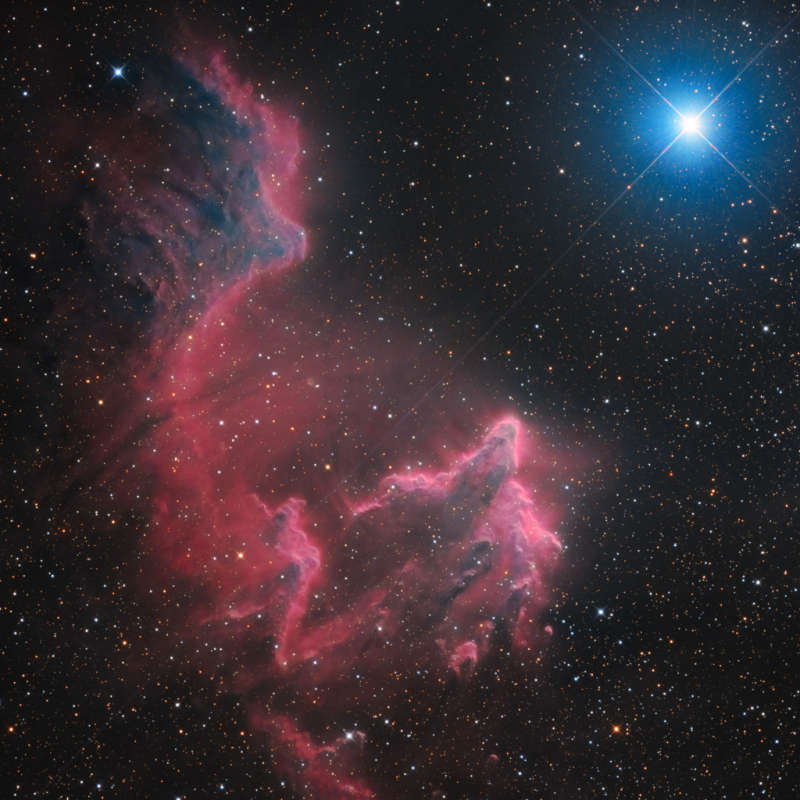
|
Credit & Copyright: Guillaume Gruntz,
Jean-Francois Bax
Explanation:
Gamma Cassiopeiae
shines high in northern autumn evening skies.
It's the brightest spiky star in this telescopic field of view
toward the constellation Cassiopeia.
Gamma Cas shares the ethereal-looking
scene
with ghostly interstellar clouds of gas and dust,
IC 59 (top left) and IC 63.
About 600 light-years distant,
the
clouds
aren't actually ghosts.
They are slowly disappearing though, eroding under the influence of
energetic radiation
from hot and luminous gamma Cas.
Gamma Cas is
physically located only 3 to 4 light-years from the
nebulae.
Slightly closer to gamma Cas, IC 63 is dominated by
red H-alpha light emitted as
hydrogen atoms ionized by the star's ultraviolet radiation recombine
with electrons.
Farther from the star, IC 59 shows proportionally less H-alpha
emission but more of the characteristic blue tint of dust
reflected star light.
The cosmic stage spans over 1 degree or 10 light-years at the
estimated distance of
gamma Cas and friends.
|
January February March April May June July August September October November December |
| |||||||||||||||||||||||||||||||||||||||||||||||||||||||
NASA Web Site Statements, Warnings, and Disclaimers
NASA Official: Jay Norris. Specific rights apply.
A service of: LHEA at NASA / GSFC
& Michigan Tech. U.
Based on Astronomy Picture
Of the Day
Publications with keywords: reflection nebula - emission nebula
Publications with words: reflection nebula - emission nebula
See also:
- APOD: 2025 December 9 B The Heart of the Soul Nebula
- APOD: 2025 September 19 B The NGC 6914 Complex
- APOD: 2025 September 10 B The Great Lacerta Nebula
- APOD: 2025 July 21 B Cats Paw Nebula from Webb Space Telescope
- APOD: 2025 July 16 B The Rosette Nebula from DECam
- APOD: 2025 July 5 B Ou4: The Giant Squid Nebula
- APOD: 2025 June 26 B The Seagull Nebula
